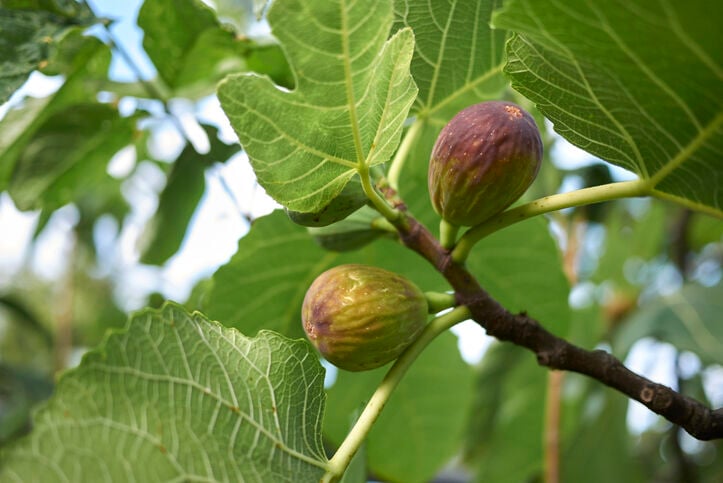Fig trees, Ficus carica, are part of the huge Ficus genus which includes around 850 different species. There are thousands of different cultivars around the world. The fig originated in the Middle East around 11,000 years ago, making it one of humanity’s oldest cultivated crops. They are beautiful trees with huge, deep green lobed leaves and a striking gray trunk.
The fig fruit itself consists of lots of little flowers which are on the inside of the fruit and are pollinated by the fig wasp. In our climate, fig trees may produce fruit twice a year, in the spring and in the summer. The cultivars that are easiest to find in our area are the "Black Mission" and the "Brown Turkey." Most cultivars do not require a second tree for pollination, and are self-fruitful.
They like full sun, but will require deep watering every five to seven days in the hottest part of the summer to look their best and produce fruit. The exception to this is young trees in their first year or two after planting — they may require watering every two to three days in summer. Figs don’t mind rocky soils, but prefer a pH closer to neutral (our soils are alkaline) so adding some compost or worm castings every two to three months will help keep the soil more to their liking. They are fast-growing trees, particularly when well-watered.
Fig trees produce deep roots which will damage nearby structures, so plant them away from walls, driveways and homes. Trees need well-draining soil, so make sure you remove caliche before planting. The roots do not like to sit in water. Figs are sensitive to over-watering, which causes all of the leaves to turn yellow.
Supplementing the soil with organic matter (such as the aforementioned compost or worm castings) should be adequate to meet their needs. If you notice that your tree hasn’t grown much in the past year, you can supplement with organic fertilizer three times per year until growth rate returns to normal (about 1 foot per year).
Figs are deciduous and lose their leaves for the winter, so will not require much water during that time. Reduce your watering in the fall to avoid new growth that will be sensitive to frost damage. The silver-gray trunks are beautiful in shape, and are ornamental even when the tree is dormant. They do not require any pruning, unlike other fruit trees, and have an attractive natural shape. They may suffer some frost damage with particularly cold winters; in that case hold off on pruning until all danger of frost has passed.
For more information on care and cultivation, check out this publication from the University of Arizona’s Extension Office.





